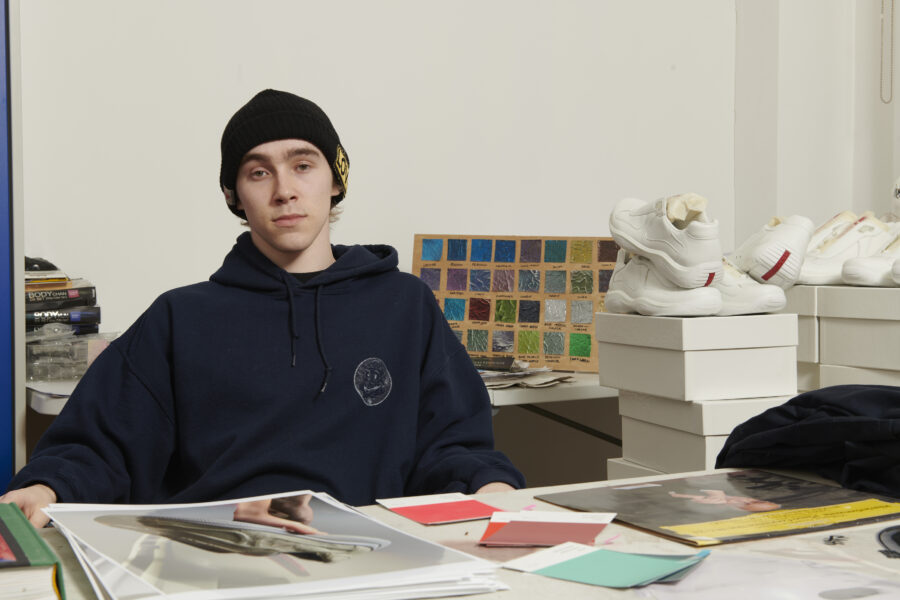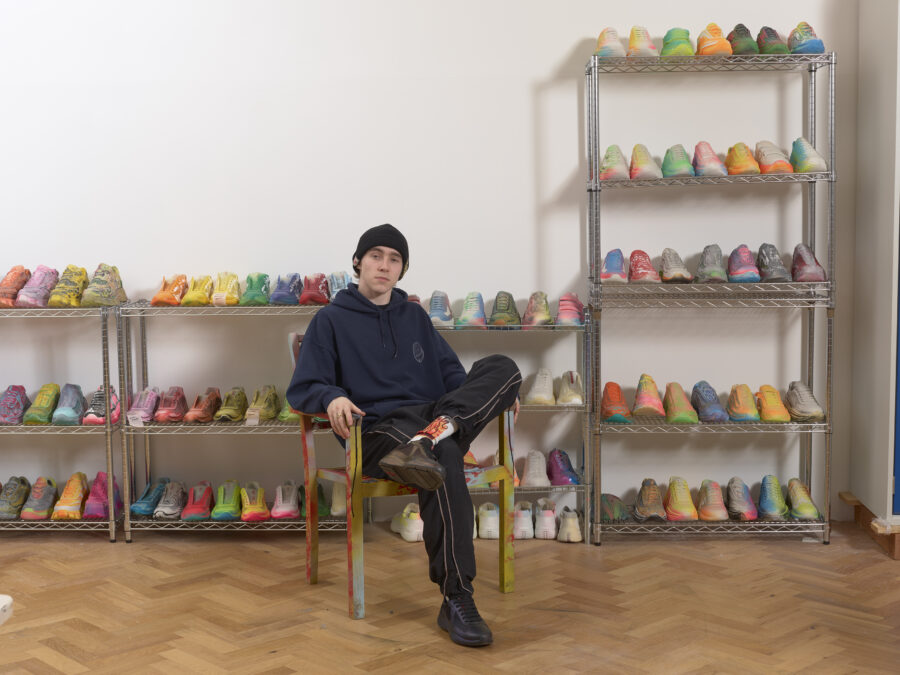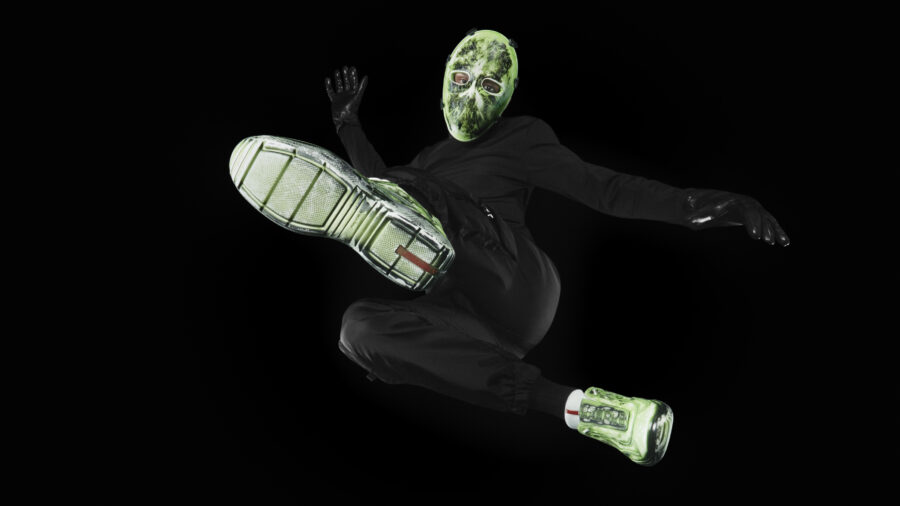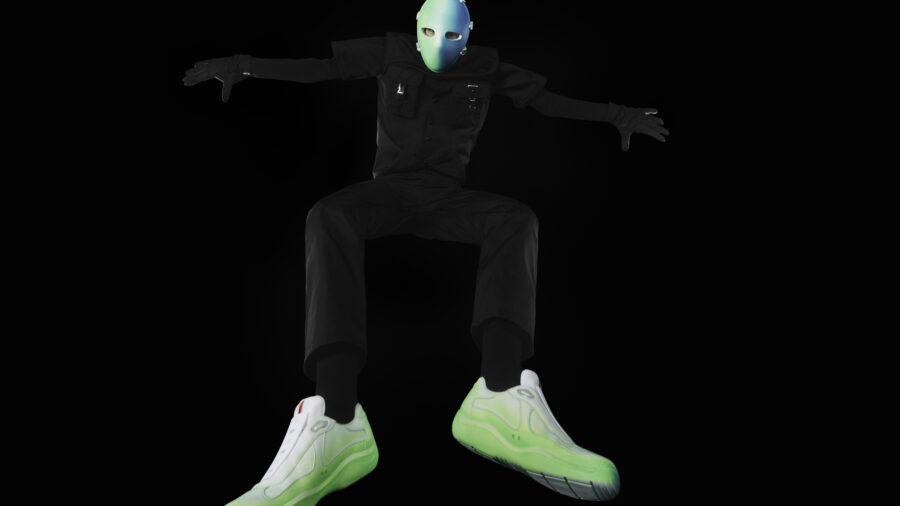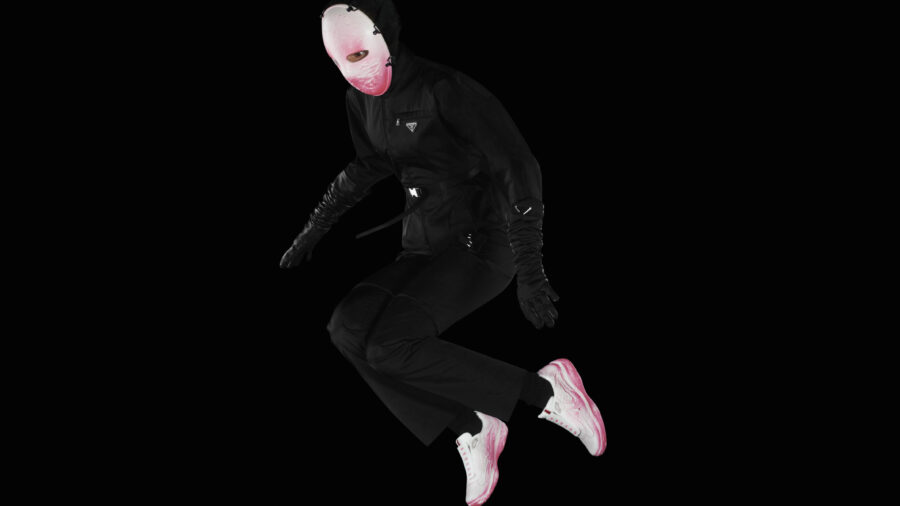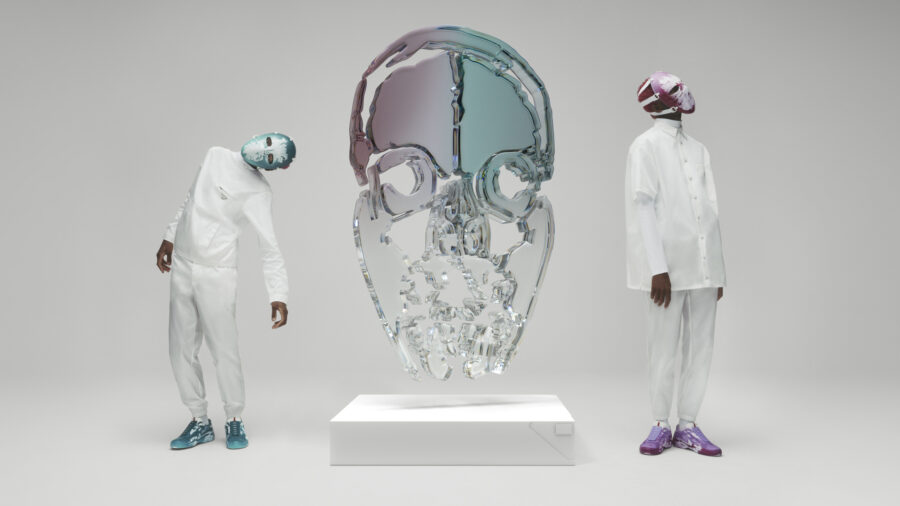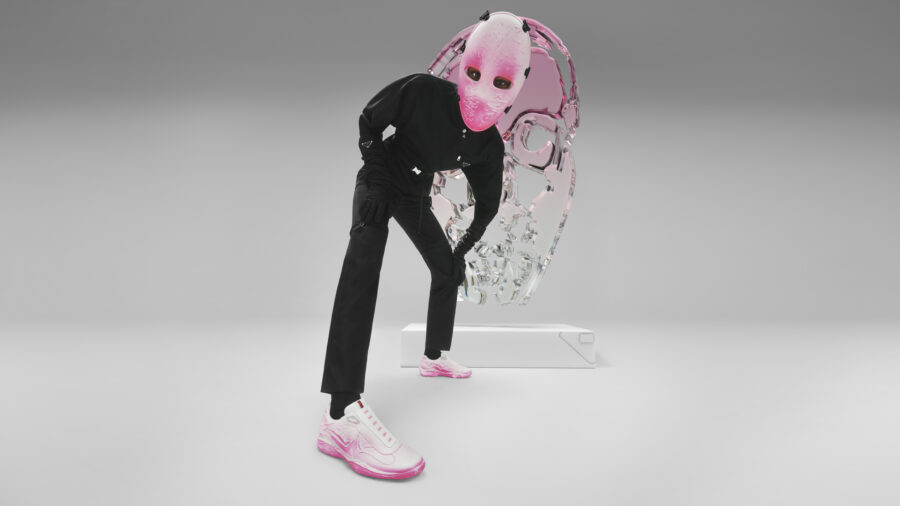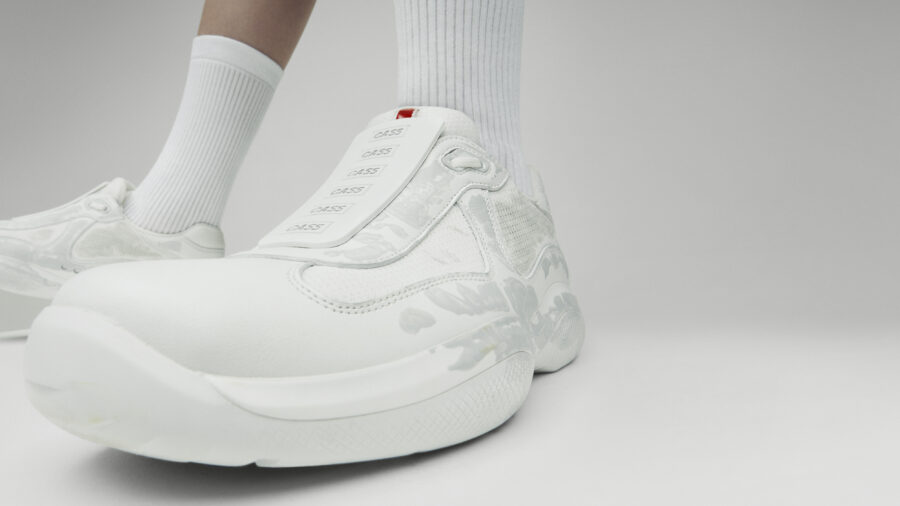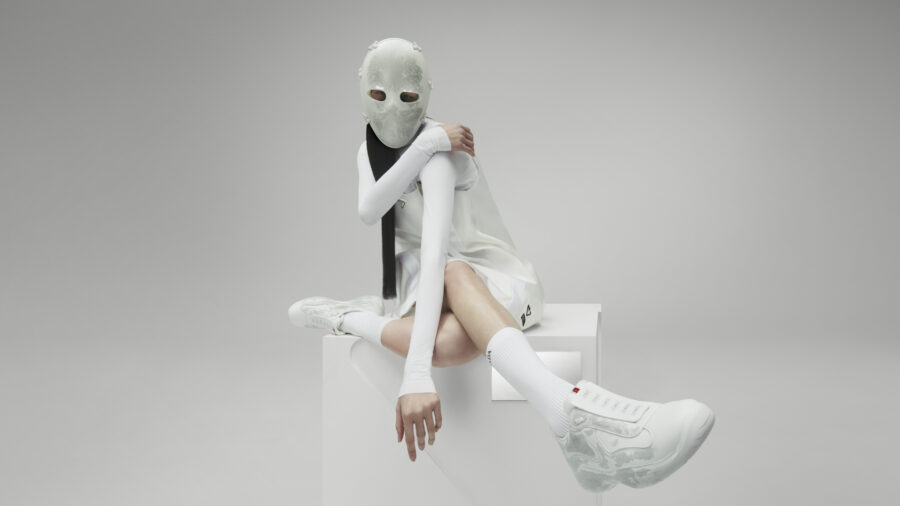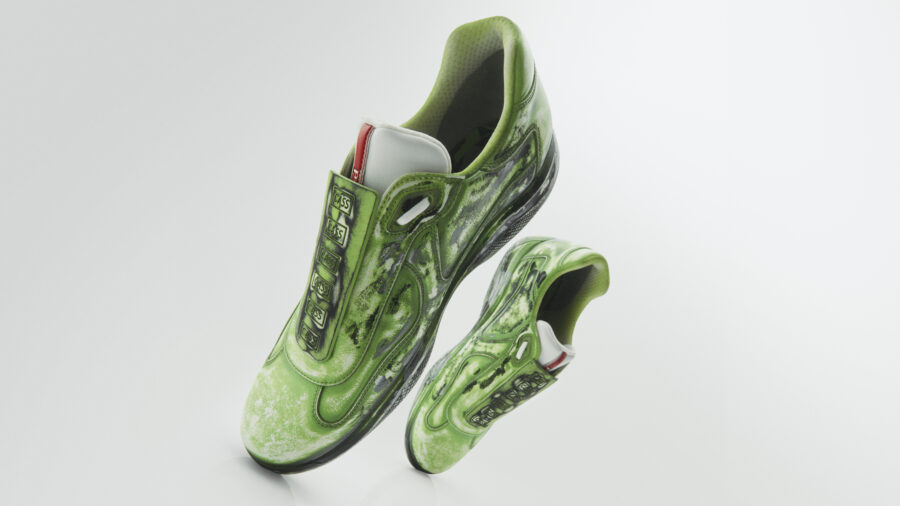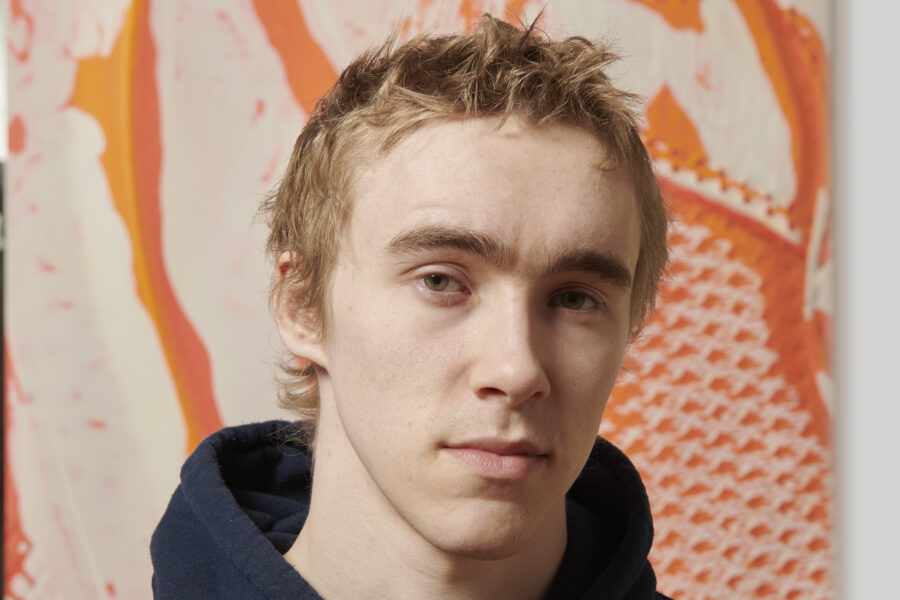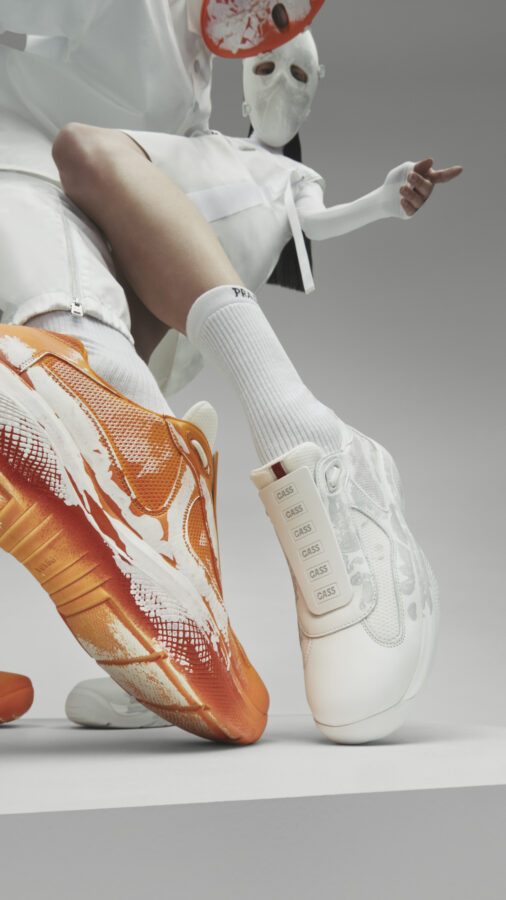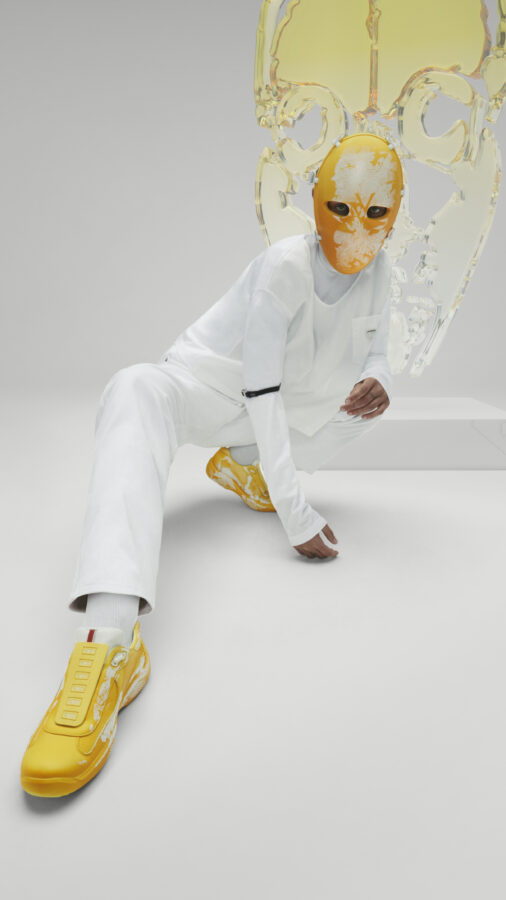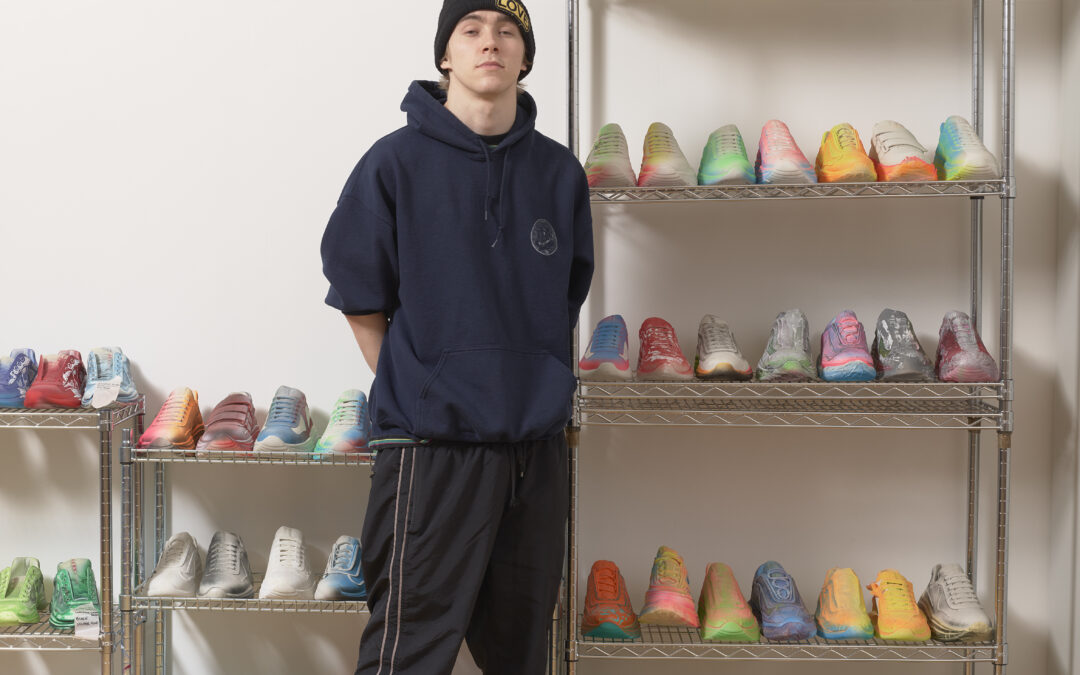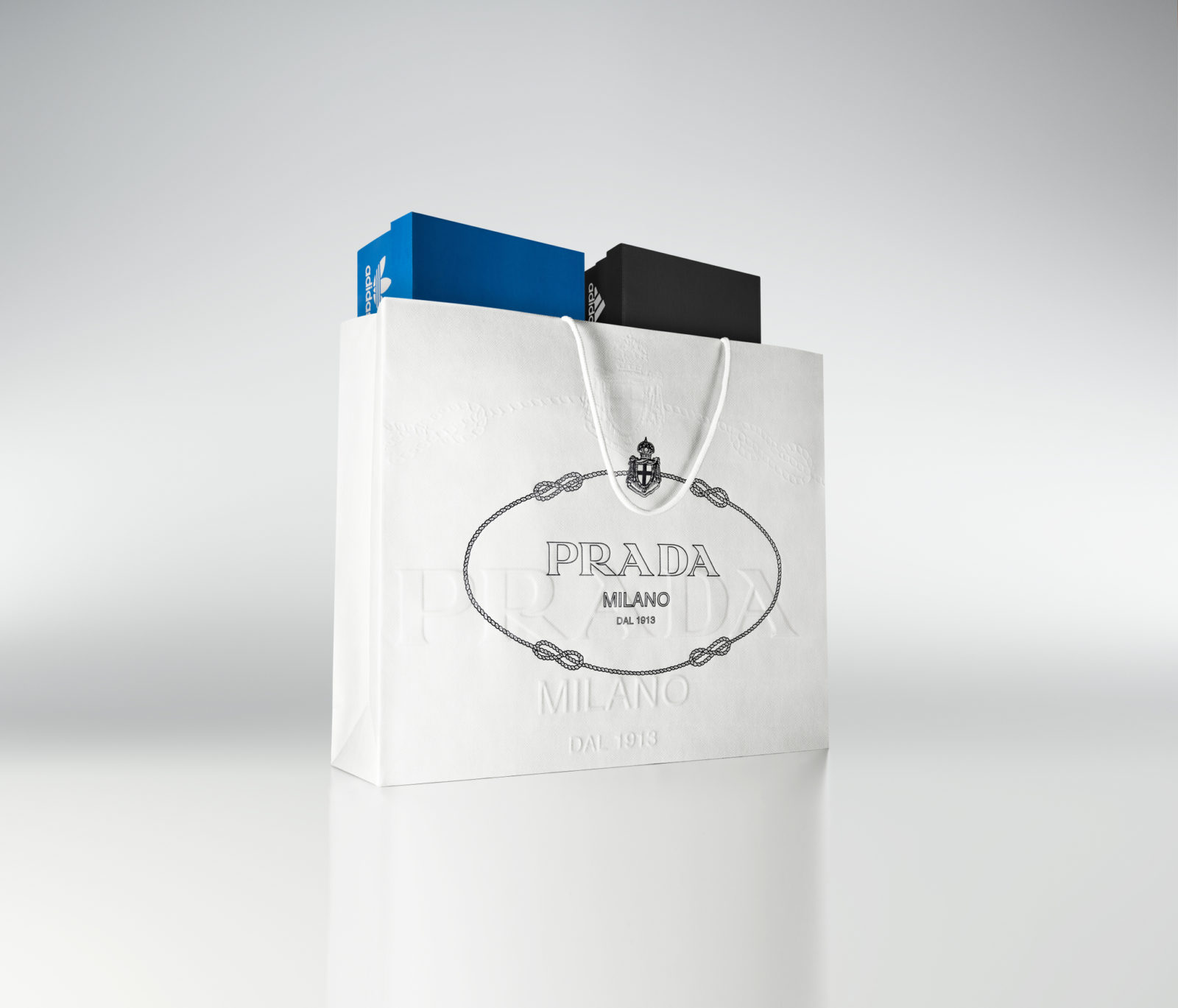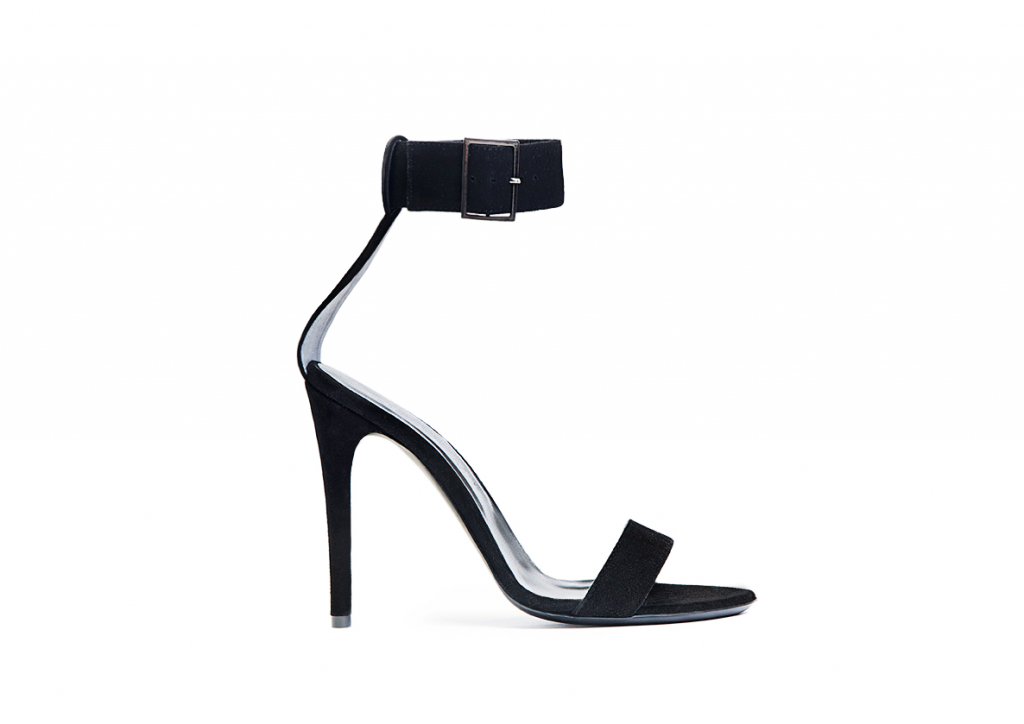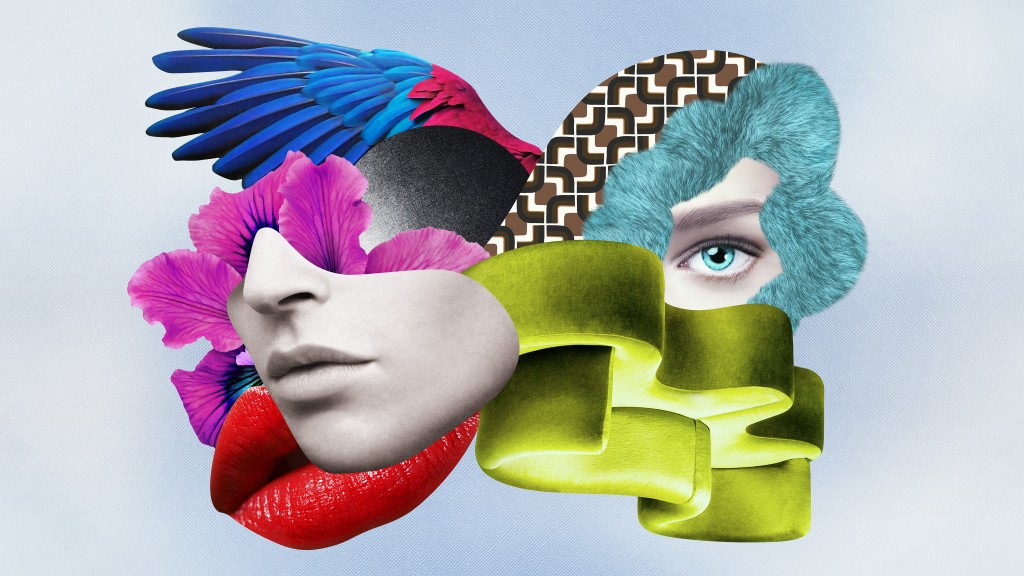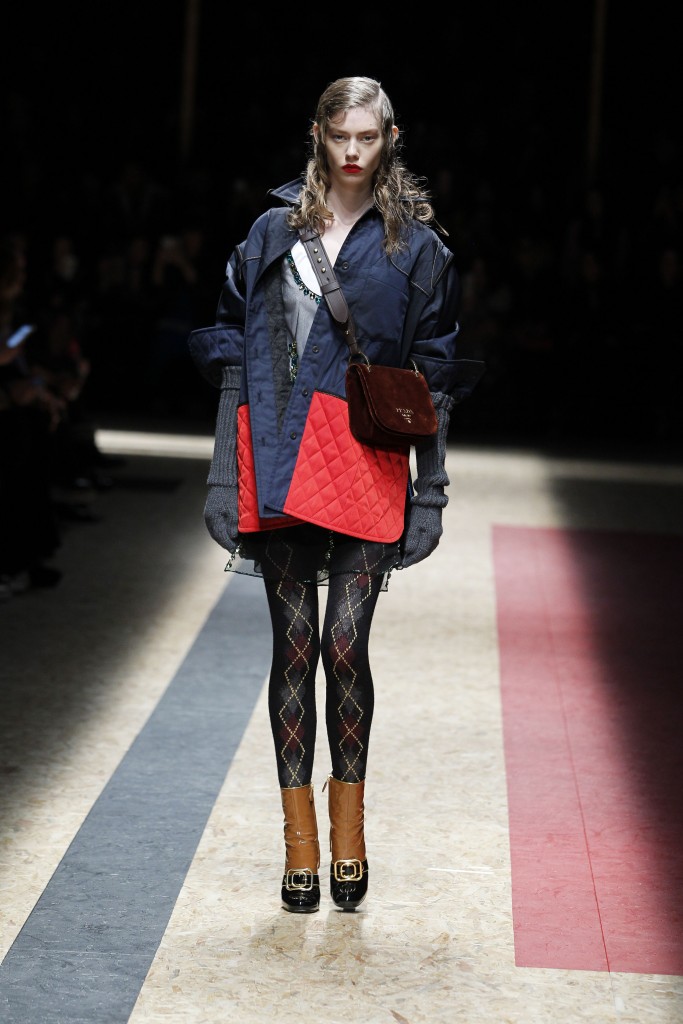
CASS X PRADA RELAUNCH THE AMERICA’S CUP SHOE
By Roisin Breen
Cassius Hirst spoke to Crash about his latest collaboration with Prada: “Cass X Prada.” It is a four style collection featuring twenty-two unique colorways for the relaunch of the iconic and pioneering America’s Cup shoe. Growing up in Devon, in the south of England Cassius Hirst was always bored with school and looking for more. Naturally curious and experimental, his “can-do” attitude led him into spray painting shoes that have gathered a cult internet following and a place in the Museum of Contemporary Art in Chicago.
RB – It’s evident from looking at your Instagram account that you’ve already accumulated a huge body of work. Can you talk to us about how you first got into the idea of painting shoes?
CH – I started by painting a few pairs at my studio because I had seen other people doing it online, and it inspired me to have a go. A friend of mine at school was also into the idea so we started bouncing ideas between us about the different methods we could use. She was into using leather paint, but I was more interested in spray painting because I thought the leather paint would probably crack and peel. When you start looking you realize there’s so many products that are made for it, paints that are specifically designed for shoes, but I knew that it wouldn’t work quite as well. So she went ahead and tried with the paint and brush and it did end up cracking and peeling. I had a go with stencils and spray paint and I was pretty happy with the first result to be honest, even though it was nothing compared to what I did later, it wasn’t bad for a first shot. I continued experimenting and I gave them to friends so they started to spread around, and the more I experimented the more my ideas became stronger and I started to develop my own style. I made an Instagram account specially for my shoes because I thought it was a great tool to use as a digital gallery. I just wanted it to be very simple, with nice consistent photos of the shoes and nothing else. I thought I should keep it separate from everything else so that if someone looks, they can just see shoes. I had used Instagram in this way before for other projects so I was quite prepared with a strong idea of how I wanted it to be curated. It was all just so much fun! I took all the photos of myself on a big piece of foam board in the garden in the sun. It’s great being able to manage everything from your phone.
RB – It’s great to be able to look back to see the progression of your work and your aesthetic as a designer in that way. Can you talk to us about how you got into this collaboration, CASS X PRADA and the relaunch of the America’s Cup shoe with Prada?
CH – It was an idea that began whilst I was painting some Air Forces. I was experimenting with one pair and I had taped up the sole and the tongue and then I took some vinyl stickers and wrapped them around the shoe and painted it. Usually I would take everything off at the end, but I loved how it looked, with the taped up sole and tongue, and the stickers, so I sent a photo of it to my dad (Damien Hirst) and then he said, ‘’Maybe I’ll just send this to Miuccia (Prada) and see what she thinks!” So, of course I was like, “Oh wow, ok then!” (Laughing) I mean I thought it looked cool and I thought it was amazing, but it wasn’t anything that I could create myself because it’s not feasible to sell a pair of shoes that’s covered in tape, that would be a bit too far! But Miuccia thought it was amazing and she was into the idea of starting a project together and taking it further. I didn’t really believe it was real for a long time, but then they invited us to Tuscany to the factory where they make everything and it was all of a sudden very serious. They had all the shoes out on display for me to pick which ones I thought that I could do something with. That was all around three years ago and they sent me a selection of shoes to start experimenting on and it’s been a case of kind of exploring and creating since then.
RB – Wow, three years is a long time!
CH – Yeah, it’s been a very long project with a lot of stages to it, but it was really beneficial to work through the process in that way. There were moments when I went a bit crazy with my designs because I had an idea that I wanted to try and expand from what, at the time I saw as “just painting shoes” and I was trying to be more creative and inventive. I almost ended up creating an entirely new Prada shoe! (Laughs) And the feedback I got from the team there allowed me to reign it back in and find my way back to the project. (Laughs) It was at that point when they suggested the idea of working with them on the relaunch of the America’s Cup and they sent me a selection of them to paint and try out and that’s when I really found my way back and got into the painting, taking the processes I had done previously when painting the Air Forces and developing it, eventually ended up with a nice family of styles. I’ve learnt a lot from it, there were points where I was frustrated that it was going back to how I started but once I really settled into it, I got my rhythm back and it was great.
RB – What was the factory in Tuscany like to visit?
CH – It was unbelievable! It was a crazy experience for me because I don’t come from a fashion background, so I didn’t have that prior knowledge about the endlessness of their creations, so it was amazing to see the factory where they keep all their leathers and the archives where they have one of every pair of shoes they’ve ever made together in one room. It was crazy, the whole thing was really surreal.
RB – Did you work with the design team at Prada?
CH – In some ways yes, although they gave me a lot of freedom to experiment and try things out on my own. The way we collaborated was that I would pitch certain ideas and they would give me feedback, and then I would rework on something, and wait for further feedback. It was a lot of back and forth in this way before we came to a final product that we both agreed on.
RB –You presented the styles in “ADSR” order, which is a common type of music parameter control and stands for “Attack, Decay, Sustain, Release.” Can you talk more to us about how you came up with this naming system?
CH – I have been making music on the side for around two years, which is not very long at all but I’ve gone in pretty deep, quite quickly. It was difficult at first trying to come up with the names because it’s something I always find quite challenging so I was brainstorming with my dad and I was looking through a manual of synthesizer when I saw a diagram of the four words and I just thought it felt right, it made sense to me. I do always worry with my explanation of it because I feel like as I said I’ve only done music for two years and it’s fairly technical stuff. (Laughs)
RB – What kind of music do you make then?
CH – I’m really into machines, I had a sequencer that sequences some drum machines, but it’s a mix of stuff. A mix of really chaotic stuff that’s almost horrible to listen to (laughs) and then lately I’ve been getting into funky baselines and fast drums which is funny because I don’t like clubs or raves. I’ve never been into them at all (laughing) but now I’m finding myself making music that would be appropriate for that environment.
RB – I feel like that happens a lot with DJs, they’re not necessarily the person that goes to the party, but they’re the person that makes the party (laughing.) So, where do you get your inspiration as an artist?
CH – For me, there’s kind of two sides of inspiration, there’s the inspiration that gives you the motivation to create, and inspiration that’s driven by styles and visuals. I find the inspiration that gives me motivation everywhere. Anyone that I’ve looked up to as inspiration I always find they share a common thing that inspires me, it’s people who put years and years into their craft and I think that by doing that, you will go on to create great things. I take that as my inspiration. In terms of visual inspiration, it’s something that I always find a bit tricky to explain, because I don’t really go to exhibitions or use Instagram in that way. I’m much more dictated by the tools, in the same way that I make music. It’s about searching and experimenting what all the different tools have to offer. When it comes to shoes if I’ve got masking tape, stencils and spray paint then the possibilities are endless. It’s a lot of just trying stuff out. I think it also comes from seeing people doing things that I’m not so into myself, for example, when I was painting Air Forces I saw a lot of people who would paint a footballer or something on the shoe, really meticulously. Seeing that made me think that I would prefer to do stuff that’s more abstract, not using designs but just painting it instead. It’s hard to describe, it’s abstract and I guess it’s universal, I like coming up with universal designs.
RB – Style is much more universal these days, and we are able to see that much more through the internet. The Prada America’s Cup shoe was huge when I was at school, everyone wanted a pair. I’ve since heard that they were huge everywhere, Paris, Milan… everywhere, but it wasn’t information we necessarily had access to back then.
CH – Yeah, I mean think it’s all about accessibility, you know, I mean if you paint a person on something, it only means something to the people that know who that person is but that’s why a good shoe is amazing, you know you don’t need to understand anything to understand it. It says what it is itself.
RB – You can just love it for what it is. (Laughs) CH – Yeah, and if you love it you love it! (Laughs)
RB – You can see the influence of skate culture and street art in your work, where do you think this comes from?
CH – When I was really young, I wanted to be a motor bike or motocross rider who could fly through air! I got into skating I think when I was six or so, It was similar to my foray into shoe design, I saw someone else doing it and I really wanted to be able to do it, and then I spent years being terrible at it (laughs) but then eventually kind of got good at it (laughing.) I think a part of it definitely came from growing up in Devon, it can get slightly boring and there’s not much to do, so skating became everything to me. I hated school, so I just wanted to get through the weeks so that I could go and skate all weekend. Finger boarding was funny, I started that when I was about eight, just copying people on YouTube but it started as a very private thing that I only did at home and I never met anyone else who did it. A couple of people warned me that I would have to stop at some point (laughs) so I decided that fourteen would be a good age to stop, I figured that’s when you start to become a real teenager. Then, instead of stopping, I decided to make an Instagram and I would just film videos of it and upload them to YouTube, mainly because fingerboarding is really hard to film and phones had got good enough to do that. When I was younger, I had always wanted to film it, but I couldn’t because of camera limitations, but I just started posting clips every day for a few years, and then it suddenly went crazy. I learnt about Instagram through that, and realized that I should never stop no matter what my age, I should just keep going, because it’s fun. I do it less so now because I’ve been busy, but it’s the same as skating, I’d never quit. I’ve learnt a lot from it. I went to LA recently to film a video, and I’m going to Germany this month to film some clips with a group of other fingerboarders. It’s shocking because if I’d seen myself when I was younger, I would have been blown away. Why should you ever stop if it’s something you enjoy?
RB – That’s a good motto to stick to. When you first started painting shoes did you envision it would turn into a career for you at some point?
CH – Not really, I think I’ve always just seen it as “a thing I do.” (Laughs.)
RB – You’re very humble!
CH – It would be very good for it to turn into a career because it would be very good to use it to fuel other projects and get a cycle going, but I didn’t really see it as my career beforehand. I think I’ve always had a feeling it’s “just painting shoes.” There’s a lot of people that do it and you can’t go and meet your girlfriend’s dad and tell him your career is painting shoes. (Laughs)
RB – But you could tell him you did a collection for Prada! (Laughs)
CH – Exactly! It’s reached a point where it’s breaking through now, and I can see the value in it and I can see that other people can see the value in it too. For Prada to see the value in it was really amazing, and I know that I’ve got more to give so hopefully everyone’s going to get into it and want more.
RB – Do you have plans to branch further into fashion?
CH – I’m open to it because I think that a lot of the techniques that I have learnt from painting shoes are applicable to other clothes. I think I could apply the process to anything but the tools would need to change. I don’t really know what those tools are to paint a dress for example, but I think it could be a lot of fun. Someone did ask me to paint a leather jacket for them, but they never sent it to me which is a shame because I was really looking forward to doing it!
RB – Do you have any plans for the next step or any upcoming projects you can tell us about?
CH – Not really to be honest as I’ve been chowing through this over the past few years. It was a three-year project so it’s been a lot of work, I’d like to take a little bit of space afterwards. I do have some Air Force ones that I’ve been painting on the side, but other than that, nothing specific.
RB – Does your dad have an influence over you as an artist?
CH – Yeah, he does, we always have a back and forth and he’s always good to talk to because he won’t tell you it’s good if it’s crap (laughs.) I ask his advice more when I’m making music actually, his feedback on my music is fascinating because he’s always telling me to give a bit more, but with shoes he always just says that they’re amazing. With all the Prada styles he thought they were amazing from the beginning, but with the shoes I feel a lot more confident with my own perspective on it.
RB – Do you think you’d ever collaborate with him on a project?
CH – Probably not. I think it would be weird because I think we’d clash quite a lot. He’d want to let me do everything and I’d want to let him do everything, and we’d just never get anything done (laughs.) But it’s a nice idea!
The Cass x Prada collection is a limited edition of 3,000 pairs globally, sold through a selection of only 18 Prada boutiques worldwide and via prada.com. In France the shoes are available in Paris at the Faubourg Saint-Honoré store.
Discover the collection below.
